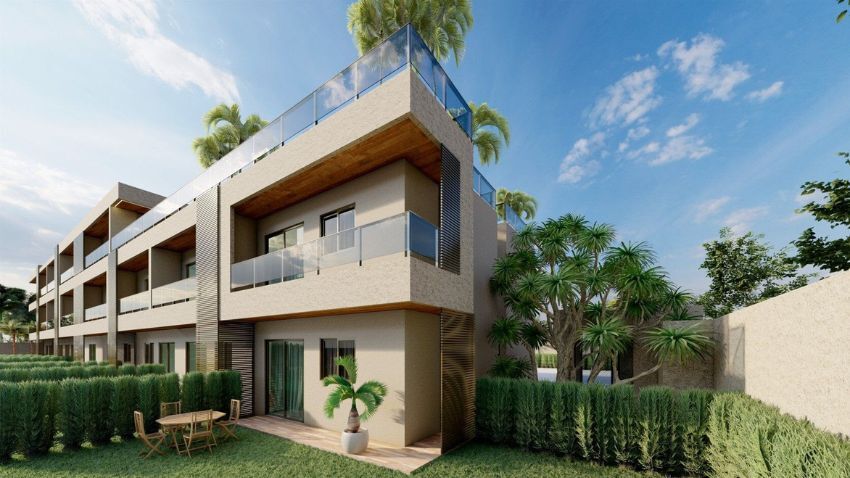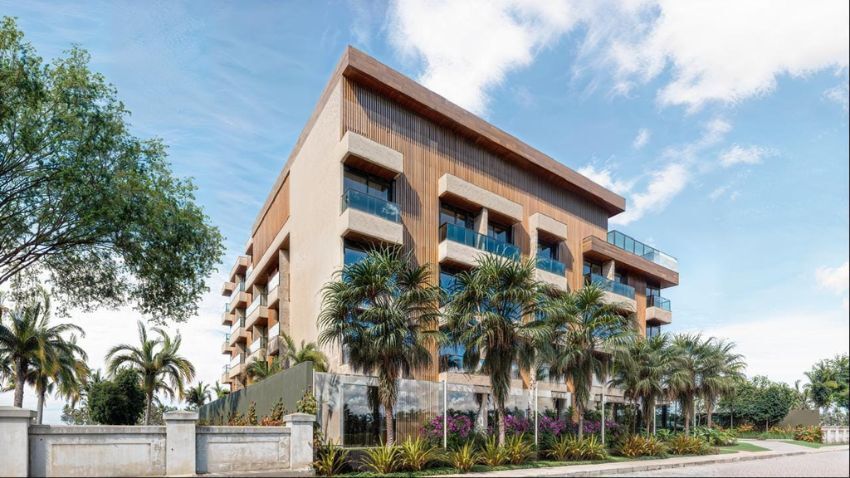Paved, Walkable & Organized: Welcome To The "Acceleration Phase"
If you were to visit Porto das Dunas today, you would feel something that is hard to capture in photos……it feels organized.Traffic flows smoothly....

You're likely aware that Brazil's economic landscape is as diverse as its rainforest, but have you considered what truly signals its stability? Let's look at five critical indicators: GDP growth trends, the unemployment rate, inflation stability, fiscal health, and export market dynamics. Each of these factors not only shines a light on current economic conditions but also subtly hints at future potential. As you ponder these indicators, think about their interplay and overarching impact. What do these trends suggest about Brazil's readiness to face economic challenges? This exploration might offer more than a few surprises about the resilience and complexity of Brazil's economy.

Brazil's GDP growth trends, reflecting a rise from negative to positive rates, highlight the country's gradual economic recovery and stability. You've seen GDP grew modestly to 0.7% in 2017 after facing sharp declines in the preceding years, with -3.6% in 2016 and -3.8% in 2015. This turnaround isn't just a number; it's a demonstration of the resilience and potential recovery of the economy. As you explore further into this economic development, it's clear that the positive trajectory of Brazil's GDP is a critical indicator of economic health. The shift from contraction to expansion signals a stabilizing economy, but it's more than just surface-level recovery. Behind these numbers is a story of strategic reforms and adjustments, including tax reform initiatives aimed at enhancing fiscal health and attracting investments. Tax reform, in particular, plays a pivotal role in this context. It's designed to streamline processes, reduce complexities, and make the business environment more conducive to growth. Such reforms are essential for you to understand as they directly impact economic development by improving the efficiency of resource allocation and boosting investor confidence. As you monitor these changes, remember that continuous assessment of GDP growth rates will provide insights into the effectiveness of these policies and the ongoing economic stability in Brazil.
You'll find that the recent decrease in the unemployment rate to 7.5% in November 2023 marks Brazil's lowest since 2015, signalling significant strides in economic recovery. This improvement reflects positive changes in labour market dynamics, enhancing economic stability across the nation. However, despite these encouraging signs, challenges linger, particularly in creating sufficient and meaningful job opportunities for all segments of society.
Delving deeper into youth unemployment, you'll notice that the situation remains particularly pressing. Historical data show that in 2014, the unemployment rate for Brazilian youth aged 15-24 was noticeably high at 16.1%, with female youth even worse off at a rate of 21.2%. These figures highlight persistent issues in the labour market that disproportionately affect young Brazilians, especially women.
To grasp the full picture of Brazil's economic health, it's important to monitor these unemployment trends continuously. Doing so not only sheds light on the immediate economic conditions but also helps forecast future economic stability and growth potential. By understanding these dynamics, you can better appreciate the progress made and the hurdles that still need to be overcome in Brazil's journey toward sustainable development.

While exploring Brazil's economic landscape, monitoring the inflation rate offers another vital perspective on its financial health. As you investigate the details, you'll find that the overall inflation rate was 4.6% in December, a slight decrease from 5.2% in September. This indicates a subtle easing but doesn't capture the entire picture.
Digging deeper, the core inflation, which excludes volatile items like food and energy, stood at 4.2%. It's important you understand that this figure suggests less fluctuation and perhaps a more stable economic undercurrent than the headline rate might imply. However, not all is steady. High services inflation, particularly in health services, hit 9.8%, posing a challenge to economic stability. This high rate affects the affordability of essential services, impacting standard living costs directly.
Furthermore, housing inflation, a significant component of overall inflation, showed a more reassuring figure at a 2.8% increase on a six-month annualized basis. It's lower, reflecting some relief in one of the basic expenditure categories. Meanwhile, wages in Brazil have risen by 3.8% compared to last year, influencing these inflation trends by increasing consumer purchasing power. As you keep an eye on these indicators, they'll provide valuable insights into the broader economic health in Brazil.
Evaluating the fiscal health of the government, public debt stood at 78.4% of GDP in 2017, signalling significant budgetary challenges. This high level of public debt indicates that you're dealing with a substantial burden that could hinder future economic stability and growth. The budget deficit of -1.1% of GDP the same year shows that spending consistently surpassed tax revenue, exacerbating the debt situation.
Speaking of tax revenue, it accounted for 34.9% of GDP in 2017. While this figure illustrates a strong capacity to generate government revenue, it wasn't enough to cover the expenditures, which exceeded revenues by a considerable margin. Specifically, revenues totaled $726.6 billion against expenditures of $749 billion. The gap clearly highlights the ongoing struggle to balance the budget and reduce the deficit.
Moreover, the Gini index, sitting at 49.7 in 2014, sheds light on another layer of fiscal health. This high index value points to significant income inequality, which can strain fiscal policies and complicate efforts to improve tax efficiency and collection. Addressing these disparities is essential as they directly impact the overall economic fabric and the government's ability to manage its finances sustainably.

Brazil's diverse export market, featuring agricultural goods, minerals, and manufactured products, plays an essential role in its economic stability. As you explore the workings of this South American powerhouse, you'll find that the dynamics of its export sector are intricately complex and important for maintaining a healthy trade balance.
Here are some key points about Brazil's export market dynamics:
As you explore Brazil's economic landscape, keep an eye on the robust GDP growth trends, the falling unemployment rates, and the well-managed inflation. You'll find reassurance in the government's commitment to fiscal health and be impressed by the vibrant dynamics of the export market.
Together, these indicators not only reflect Brazil's current economic stability but also highlight its potential for future growth. Staying informed about these aspects will help you understand the resilience and prospects of Brazil's economy.


Brazil Beachfront is your trusted source for uncovering the incredible opportunities along Brazil’s breathtaking Northeastern coastline. With Brazil’s economy on the rise and its middle class growing rapidly, the market offers an undeniable upside for offshore investors.
The newsletter also showcases past projects, providing readers who have purchased real estate with detailed construction updates to keep them informed every step of the way. From the lifestyle appeal of Brazil’s pristine beaches to the financial advantages of investing in this high-growth market, Brazil Beachfront delivers the insights and updates needed to capitalize on one of the world’s most dynamic real estate opportunities.

If you were to visit Porto das Dunas today, you would feel something that is hard to capture in photos……it feels organized.Traffic flows smoothly....

If you’ve been following Brazil Beachfront for any length of time, you already know Porto das Dunas has been one of our most closely watched markets...

Two Saturdays back, I went live with hundreds of you to unveil what I consider one of the most compelling investment opportunities I have shared to...